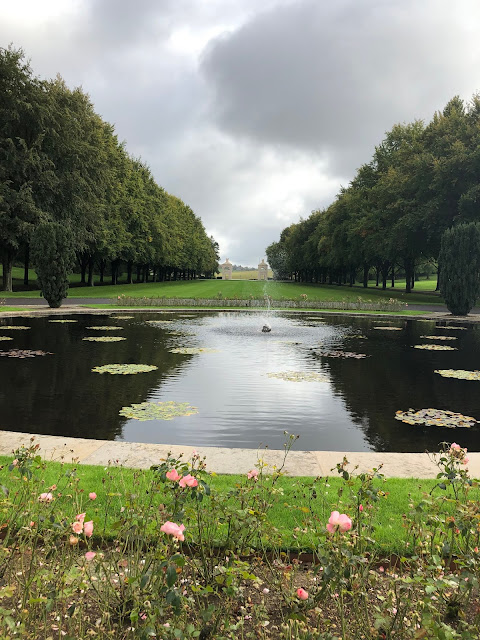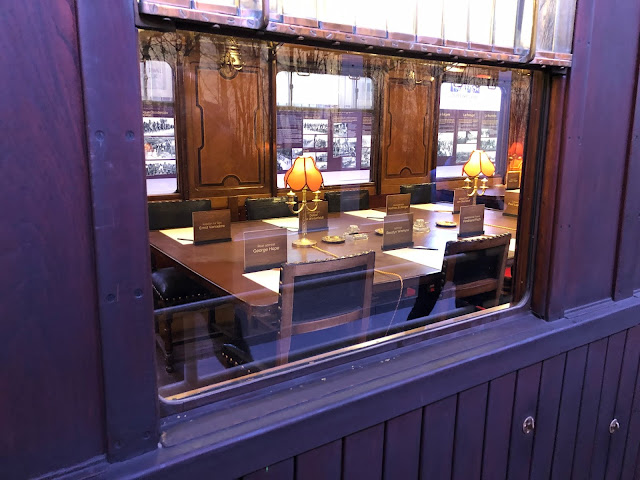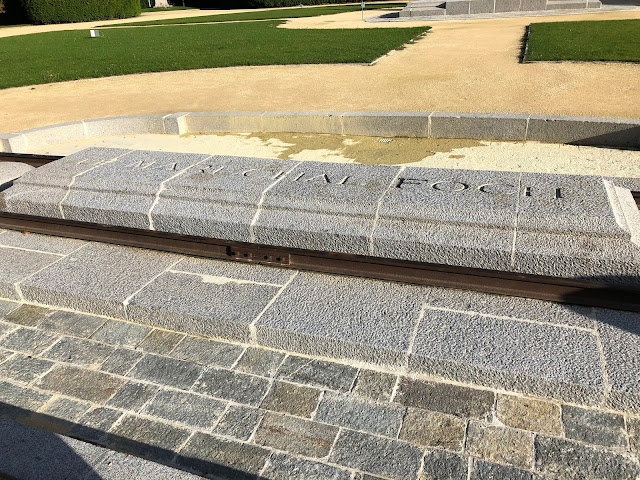Before leaving town we stopped a the inevitable war memorial in the center of town. We didn't do any walking around town since the hotel was located about a mile out in the woods. Pretty, but not very convenient. I took some photos of the center of town. It is very clean with nice looking buildings.
For one of the few times on the trip, there is actually some blue sky in the morning. As it will turn out, we did get rained on later in the morning so as not to disrupt out string of daily rains.
We don't have many stops on the last full day of our tour. The first one is at the largest American cemetery in the Western hemisphere and only second in size to the one in the Philippines. The Meuse-Argonne American Cemetery currently is the home of just over 14,000 American soldiers. At its peak, there were over 26,000 in the cemetery, but over the years, many of those have been repatriated back to the US.
Almost all of those buried here died in the last six weeks of the war, October and November 1918, during the last major engagement of the war, the Meuse-Argonne offensive. We found many who died after the signing of the Armistice on November 11, 1918.
The Meuse-Argonne offensive was the largest engagement ever experienced by the US Army with over 1.2 million American soldiers taking part.
After breaking free of Bruce, we wandered around the cemetery at our leisure. It is an extremely well kept place. Bruce assured us that the US will not spare any expense to honor those residing here. Something I reminded him of just before we departed.
 |
| A soldier who died the day AFTER the war ended |
 |
| This soldier died on the day of the Armistice |
 |
| I found a couple of Howells |
We walked up to the chapel, where on the wings are engraved the names of the missing.
 |
| If you zoom in, you can see the Montfaucon Memorial on the far high ground, 7 km away |
 |
| The other US battles relative to the Meuse-Argonne Cemetery |
If there is a distinction between the two nouns, it is that the Pioneer moves ahead of the main combat formations to prepare the means for the main force to move ahead, building bridges, tunnels, etc. An Engineer seems to be a more general category and could include someone working behind the lines on infrastructure to support on-going operations, building airfields, ports, etc.
It was getting close to the time to head back to the bus when I noticed the marker of Esdras R. Wheatley from Idaho who died on October 16, 1918. What caught my eye was that it showed Esdras was a Sargent First Class in the 43rd Balioon Company. Either this was a typo, or I needed to look up what a Balioon Company was responsible for doing.
A few markers down, I found the marker of Everette J. Cooper who was a private first class in the First Balloon Company.
When I got back to the bus, Bruce Malone was there chatting with the others and I showed him my picture of the Balioon marker. Bruce was shocked and said he would see to it that the misspelling was corrected immediately. I'm not sure why the haste since it has been this way for almost 100 years.
 |
| Another Howell |
The actual rail car where the 1918 and 1940 signings took place was destroyed in Germany during WWI. The car we observed is one of several built that was configured in the same manner as the famous No. 2419. This car was actually No. 2439.
On to Paris where we checked into the Hotel Mercure Paris CDG. We had a farwell dinner at the hotel. Most are flying out in the morning. We are going to check out and taxi to our hotel for the next three nights, the Hotel Duc de Saint-Simon, in the center of Paris (Hotel Duc de Saint-Simon).


















































No comments:
Post a Comment